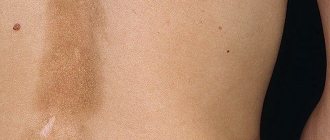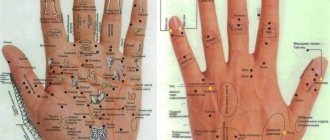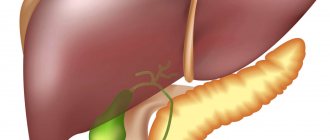What is muscle weakness and rapid muscle fatigue?
Muscle weakness is a common phenomenon that includes several concepts. These include dysfunction, tiredness and fatigue.
Primary muscle weakness (true)
– muscle dysfunction, decreased strength capabilities, a person’s inability to perform an action with the help of a muscle. This is also true for trained people.
Asthenia – muscle fatigue, exhaustion
. The functional abilities of the muscles are preserved, but more effort is required to perform actions. It is typical for people suffering from insomnia, chronic fatigue and heart, kidney, and lung disease.
Muscle fatigue
– rapid loss of the ability of normal muscle functioning and their slow recovery, which is often observed with asthenia. Characteristic of people with myotonic dystrophy.
Causes of muscle weakness in legs and arms
Almost everyone experiences muscle weakness, and there are a number of reasons for this:
- Neurological
(stroke, multiple sclerosis, spinal cord and brain injuries, meningitis, polio, encephalitis, autoimmune Guillain-Barre disease). - Lack of physical activity
(muscle atrophy due to inactivity). - Bad habits
(smoking, alcohol, cocaine and other psychoactive substances). - Pregnancy
(lack of iron (Fe), increased physical activity, high hormonal levels). - Old age
(muscle weakening as a result of age-related changes). - Injuries
(damage to muscle tissue, sprains and dislocations). - Medicines
(some drugs or their overdose can cause muscle weakness - antibiotics, anesthetics, oral steroids, interferon and others). - Intoxication
(poisoning of the body with narcotic and other harmful substances). - Oncology
(malignant and benign tumors). - Infections
(tuberculosis, HIV, syphilis, complex influenza, hepatitis C, Lyme disease, glandular fever, polio and malaria). - Cardiovascular disease
(inability to provide the muscles with the required amount of blood). - Endocrine pathologies
(diabetes mellitus, thyroid disorders, electrolyte imbalance). - Problems with the spine
(curvature, osteochondrosis, intervertebral hernia). - Genetic diseases
(myasthenia gravis, myotonic dystrophy and muscle dystrophy). - Damage to the sciatic or femoral nerve
(muscle weakness in only one limb). - Chronic diseases of the lungs
(COPD, lack of oxygen)
and kidneys
(salt imbalance, release of toxins into the blood, lack of vitamin D and calcium (Ca)).
Lack of sleep, dehydration, anemia, anxiety and depression can also lead to muscle weakness.
Symptoms of muscle weakness
Native advertising
A feeling of weakness in the arms, legs or body is often accompanied by drowsiness, fever, chills, impotence and apathy. Each of the symptoms informs about serious problems of the body as a whole.
There are frequent manifestations of muscle weakness at elevated temperatures, which are a consequence of inflammatory processes - bronchitis, common colds, cold kidneys, etc. The slightest jump in temperature leads to incorrect functioning of metabolic processes, and the body gradually loses its functional abilities. Therefore, at a temperature, fatigue and muscle weakness are observed, and not only in the limbs.
Manifestations of the disease are also characteristic of intoxication. Poisoning of the body can be caused by stale food, hepatitis, a certain virus, etc.
In addition, weakness and drowsiness can be a dangerous pathology of an allergic and infectious nature. Brucellosis is considered the most dangerous, often depriving its carrier of life.
There is weakness in the muscles and in cases of blood infections - leukemia and myeloid leukemia. The same symptoms appear in rheumatism.
Somatic diseases also contribute to the formation of the main symptom, including amyloidosis, Crohn's disease (associated with digestion), renal failure and cancer.
Endocrine system disorders lead to muscle weakness, as do epilepsy, neurasthenia, depression and neurosis.
Symptoms
The signs of pathology and the causes of occurrence in this case are interrelated. Myasthenia gravis is characterized primarily by weakness in the facial muscles. Often the eyelids are affected, and the patient has a double image. If pathology is found throughout the body, the muscles of the shoulder, lips and neck are affected first. As a result, it turns out that the victim cannot speak or swallow normally.
In the case when muscle weakness appears in the legs, the patient suffers from pain, a venous network occurs and a change in skin color around the affected area. If a person likes to “hit the bottle,” edema develops along with weakness, because alcohol-containing drinks provoke its manifestation.
When the cause of the pathology lies in low blood pressure, severe headaches, dizziness are detected, and the patient complains of memory lapses. With a stroke, not only does weakness appear throughout the body, but also the gait changes, speech is impaired, and it becomes difficult to speak and swallow.
The diagnosis of muscle weakness can only be made by a doctor after conducting the necessary studies. An examination is necessary, because in some cases the reason lies in the negative impact of several pathologies at once.
Muscle weakness with VSD, depression, neurosis
VSD (vegetative-vascular dystonia) manifests itself in certain diseases, including hormonal disorders and mitochondrial pathology. A number of symptoms develop against the background of autonomic dysfunction of the vascular system and cardiac muscle. This is what leads to poor circulation.
As a result, the limbs do not receive enough oxygen and red blood cells. It is difficult to remove carbon dioxide from the body. This causes severe weakness, dizziness or even body aches, and with advanced VSD, fainting.
The best way to eliminate the disease is physical activity. To normalize metabolic processes, lactic acid is needed, the production of which stops with low physical activity. Doctors recommend moving more - walking, running, doing daily warm-ups.
Drug and traditional therapies are not only ineffective, but are also fraught with complications due to muscle weakness due to VSD.
Depression against the background of disappointment, loss, bad mood and other difficulties can drive you into a melancholic state. Symptoms may include lack of appetite, nausea, dizziness, strange thoughts, pain in the heart - all this manifests itself in the form of weakness, including muscle weakness.
For depression, the following procedures will help overcome muscle weakness:
- proper nutrition;
- good sleep;
- cold and hot shower;
- positive emotions;
- help from a psychotherapist (for severe depression).
Neurosis is characterized by nervous exhaustion of the body through prolonged stress. The disease is often accompanied by VSD. In addition to physical weakness, there is also mental weakness. To eliminate the consequences, a set of measures is required, including a change in lifestyle, giving up bad habits, playing sports, walking in the fresh air, as well as drug therapy and a course of psychotherapy with a specialist.
Weakness in the limbs accompanied by trembling
Trembling is the frequent and involuntary contraction of the muscles of the legs or arms. Very often this condition is accompanied by weakness. It is quite difficult to identify the cause of this phenomenon. At the same time, experts argue that such a condition can be essential, physiological, cerebellar and parkinsonian.
Essential tremors and weakness of muscle tissue can be hereditary, and are also often associated with the patient’s age. This condition intensifies with physical activity. At the same time, it is not dangerous, but it significantly affects a person’s quality of life.
Physiological tremors and weakness in the limbs are the most common condition. As a rule, it is associated with anxiety, nervous overexcitation, fear, hypothermia, fatigue, certain diseases of the nervous system and endocrine system, as well as withdrawal syndrome. It should also be said that such tremors often appear after long exposure to the sun or taking large doses of caffeine.
Weakness and cerebellar tremors develop when the cerebellum is damaged. Thus, this may be a sign of congenital cerebellar ataxia, multiple sclerosis, and so on.
Parkinsonian tremors and weakness indicate the presence of Parkinson's disease.
A condition in which there is weakness in the limbs, as well as numbness, may indicate an impending cold or other infectious disease. Also, a similar phenomenon is often observed with poor sleep, insufficient nutrition and overwork.
If the limbs gradually become numb and weakness appears in them (for example, over the course of a week, month or even a year), then we can talk about damage to the spinal cord, brain or neuromuscular system. In such cases, a medical examination is necessary.
It must also be said that the symptoms in question very often indicate diseases of the musculoskeletal system, including intervertebral discs, spinal column, bones and joints. A similar condition can also occur after a back injury.
Muscle weakness in a child
The occurrence of muscle weakness is typical not only for adults, but also for children. Often they experience a time difference between the nerve signal and the subsequent muscle response. And this explains the behavior of babies who are unable to hold their body or limbs in a fixed position for a long time.
Causes of muscle weakness in a child may include:
- myasthenia gravis;
- congenital hypothyroidism;
- botulism;
- rickets;
- muscular dystrophy and spinal atrophy;
- blood poisoning;
- consequences of drug therapy;
- excess vitamin D;
- Down syndrome (Prader-Willi, Marfan).
As muscle weakness develops, regardless of its cause, the child's appearance changes.
Primary symptoms of muscle weakness in a child:
- using limbs as support by placing them to the sides;
- involuntary placement of the arms, slipping when lifting by the armpits (the child cannot hang onto the parent’s arms by the armpits);
- inability to hold the head straight (lowering, throwing back);
- lack of flexion of the limbs during sleep (arms and legs are located along the body);
- general delay in physical development (inability to hold objects, sit upright, crawl and roll over).
Treatment depends on the cause and extent of muscle dysfunction. Specialists such as an orthopedist, physiotherapist, neurologist and others may prescribe the following treatment:
- Special exercises.
- Proper nutrition.
- Development of coordination of movements, as well as fine motor skills.
- Development of posture and formation of gait.
- Physiotherapeutic procedures.
- Medicines (anti-inflammatory and muscle tonic).
- Sometimes a trip to a speech therapist (to improve speech).
You can restore muscle function in a child with any diagnosis, but only if you consult a doctor in a timely manner.
Concept
In medicine, myasthenia gravis is a decrease in the contractility of one or more muscles. The pathology can occur in any part of the body, but muscle weakness is most common in the legs, arms and face. The disease occurs as a result of a malfunction of the immune system, causing disruption of muscle cells with nerve endings.
There is an opinion that myasthenia gravis can be inherited. Experts say that this is possible, but this fact has not been scientifically proven. Often, muscle weakness manifests itself in the form of attacks; after sleep, usually no symptoms of pathology arise. During the day, the signs are more pronounced, and in the evening the situation gets completely worse. The disease has periods when it subsides and does not show itself in any way. Long-term remission is detected during pregnancy, but after some time the disease makes itself felt again.
When to see a doctor
Often muscle weakness is a consequence of overwork or temporary weakness. But in some cases it may indicate the presence of a serious illness. And if weakness is periodic or constant, you should immediately visit a doctor.
Specialists such as a therapist, neurologist, endocrinologist, surgeon and others will help you find out the cause of discomfort. You will also need to take some tests and undergo a series of examinations.
If muscle weakness is rare, there is no sensation of pain or numbness, and it goes away quickly, doctors recommend doing the following on your own:
- balance your diet;
- drink more purified water;
- take walks in the fresh air more often.
For other manifestations of muscle weakness, you must make an appointment with a specialist to quickly eliminate the possible disease. And self-medication in such cases is contraindicated.
Treatment
If muscle weakness is caused by overwork, it is enough to rest your limbs after strength training or a long walk (especially in uncomfortable shoes). In other cases, appropriate therapy may be prescribed:
- muscle development through special exercises;
- medications to improve brain activity and blood circulation;
- drugs that remove toxins from the body;
- antibacterial agents for infections in the spinal cord or brain;
- increasing neuromuscular activity through special medications;
- elimination of the consequences of poisoning;
- surgical intervention aimed at removing tumors, ulcers and hematomas.
Increasing weakness on the left side may indicate a stroke.
Traditional treatment
The prescribed therapy is based on the diagnostic results. After all the research, the doctor decides how the weak muscles will be restored. If the cause of myasthenia gravis is any disease, then first of all it is necessary to eliminate it. In most cases, it is enough to cope with the symptoms for the disease to recede, but not with muscle weakness.
To completely get rid of the pathology, long-term physiological and drug treatment is prescribed. The essence of therapy comes down to restoring the functioning of the immune system, as well as normalizing muscle tone. If the situation is severe, the doctor may prescribe surgery or radiation therapy. The goal in this case is to remove the thymus gland. This is necessary if traditional treatment or tumor detection is ineffective.
Typically, experts recommend using the following drugs as a treatment for muscle weakness:
- Anticholinesterase. Medicines of this type provoke muscle contraction; the dosage is selected individually for each patient.
- Hormonal. These drugs are used only in cases of severe pathology.
- Immunoglobulins.
Complex therapy is considered the most effective, because all treatment methods complement each other. Physiotherapy will be very useful, because it helps normalize muscle function. Doctors recommend using manual massage, aerophytotherapy, electrophoresis, and chromotherapy. When the period of remission begins, the patient can go to a sanatorium for treatment. Otherwise, during exacerbation of myasthenia gravis, excessive physical activity and certain medications are contraindicated for the patient.
Traditional methods
You can also combat muscle weakness at home. To do this, you need to take the following steps:
- Take 2-3 tbsp. l. grape juice a day.
- Drink 1 glass of decoction of unpeeled potatoes three times a week.
- Every evening, drink motherwort infusion (10%) in a volume of ? glasses.
- Make a mixture of walnuts and wild honey (proportions 1 to 1), eat every day (course – several weeks).
- Include protein foods with low fat content (fish, poultry) in your diet.
- Increase your consumption of foods containing iodine.
- 30 minutes before meals, drink a mixture consisting of 2 tbsp. l. sugar, ? glass of cranberry juice and 1 glass of lemon juice.
- Take tinctures of ginseng, aralia or lemongrass 30 minutes before meals.
- Take relaxing baths with the addition of essential oils or citrus fruits (water temperature should vary between 37-38 degrees Celsius).
- 2 tbsp. juniper (berries) and 1 glass of boiling water will calm the nervous system and restore muscle tone.
- Instead of water, drink a chilled infusion made from 1 tbsp. oat straw and 0.5 liters of boiling water.
For serious illnesses, it is not recommended to self-medicate. It is better to immediately contact a specialist.
Lack of vitamins and muscle dysfunction
// Home
Weak and ineffective muscles often create problems that little is done to correct until they become serious. Although strength and normal muscle action give the figure grace and grace in movement, both are now rare.
Weak muscle tone impairs blood circulation, interferes with normal lymph circulation, interferes with efficient digestion, often causes constipation, and sometimes makes it impossible to control urination or even empty the bladder. Often, due to muscle weakness, the internal organs sag or lie on top of each other. Clumsiness, muscle tension and poor coordination, which are very common in malnourished children and are usually ignored, are very similar to the symptoms seen in muscular dystrophy and multiple sclerosis.
Muscle weakness
Muscle is composed primarily of protein, but also contains essential fatty acids; therefore, the body's supply of these nutrients must be sufficient to maintain muscle strength. The chemical nature of muscles and the nerves that control them is very complex. And since countless enzymes, coenzymes, activators and other compounds are involved in their contraction, relaxation and repair, each nutrient is necessary in one way or another. For example, calcium, magnesium, and vitamins B6 and D are needed to relax muscles, so muscle spasms, tics, and tremors usually improve with more of these substances in your diet.
Potassium is necessary for muscle contraction in the body. In just a week, healthy volunteers fed refined foods similar to what we eat every day developed muscle weakness, extreme fatigue, constipation, and depression. All this disappeared almost immediately when they were given 10 g of potassium chloride. Severe potassium deficiency, often due to stress, vomiting, diarrhea, kidney damage, diuretics or cortisone, causes slowness, lethargy and partial paralysis. Weakened intestinal muscles allow bacteria to produce huge amounts of gases, causing colic, and spasms or displacement of the intestines can lead to intestinal obstruction. When death occurs due to potassium deficiency, autopsy reveals severe damage and muscle scarring.
Some people have such high potassium needs that they experience periodic paralysis. Examinations of these patients show that salty foods high in fat and carbohydrates, and especially sweet tooth, stress, as well as ACTH (a hormone produced by the pituitary gland) and cortisone reduce potassium levels in the blood. Even if muscles become weak, flaccid, or partially paralyzed, recovery occurs within minutes of taking potassium. Foods that are high in protein, low in salt, or rich in potassium can increase abnormally low potassium levels in the blood.
When muscle weakness leads to fatigue, gas, constipation, and inability to empty the bladder without the aid of a catheter, taking potassium chloride tablets is especially helpful. Most people, however, can get potassium by consuming fruits and vegetables, especially green leafy ones, and by avoiding refined foods.
Vitamin E deficiency appears to be a common, although rarely recognized, cause of muscle weakness. Just as red blood cells are destroyed by the action of oxygen on essential fatty acids, muscle cells throughout the body are destroyed in the absence of this vitamin. This process is especially active in adults who do not digest fat well. The nuclei of muscle cells and the enzymes necessary for muscle contraction cannot be formed without vitamin E. Its deficiency greatly increases the need for muscle tissue for oxygen, interferes with the use of certain amino acids, allows phosphorus to be excreted in the urine and leads to the destruction of a large number of B vitamins. All this impairs muscle function and recovery. Moreover, with an insufficient supply of vitamin E to the body, the number of enzymes that break down dead muscle cells increases by about 60 times. With a deficiency of vitamin E, calcium accumulates and may even be deposited in the muscles.
In pregnant women, muscle weakness due to vitamin E deficiency, often caused by iron supplements, in some cases makes labor difficult because the amount of enzymes needed to contract the muscles involved in labor is reduced. When patients with muscle weakness, pain, wrinkled skin and loss of muscle elasticity were given 400 mg of vitamin E per day, a noticeable improvement was observed in both old and young. Those who suffered from muscle disorders for years recovered almost as quickly as those who had been ill for a short time.
Long-term stress and Addison's disease
Advanced adrenal fatigue, as in Addison's disease, is characterized by apathy, excruciating fatigue and extreme muscle weakness. Although at the beginning of stress it is mainly the protein of the lymph nodes that is broken down, with prolonged stress the muscle cells are also destroyed. Moreover, exhausted adrenal glands cannot produce the hormone that stores nitrogen from destroyed cells in the body; Normally, this nitrogen is reused to build amino acids and repair tissue. Under such circumstances, muscles quickly lose strength even with protein-rich foods.
Exhausted adrenal glands are also unable to produce sufficient amounts of the salt-retaining hormone aldosterone. So much salt is lost in the urine that potassium leaves the cells, further slowing contractions and weakening and partially or completely paralyzing the muscles. Taking potassium can increase the amount of this nutrient in cells, but in this case, salt is especially needed. People with exhausted adrenal glands usually have low blood pressure, meaning they don't have enough salt.
The adrenal glands quickly become exhausted when pantothenic acid is deficient, causing the same condition as prolonged stress.
Because stress plays a role in all muscle disorders, emphasis should be placed on restoring adrenal function in any diagnosis. An anti-stress program should be followed carefully, especially in the case of Addison's disease. Recovery occurs faster if the “anti-stress formula” is taken around the clock. No essential nutrient should be overlooked.
Fibrositis and myositis
Inflammation and swelling of the connective tissue of muscles, especially the membrane, is called fibrositis or synovitis, and inflammation of the muscle itself is called myositis. Both diseases are caused by mechanical injury or strain, and the inflammation indicates that the body is not producing enough cortisone. A diet with plenty of vitamin C, pantothenic acid and drinking milk around the clock usually brings immediate relief. In case of injury, scar tissue can quickly form, so you should pay special attention to vitamin E.
Fibrositis and myositis often affect women during menopause, when the need for vitamin E is especially great, these diseases tend to cause significant discomfort before the cause is discovered. Taking vitamin E daily for myositis brings a noticeable improvement.
Pseudoparalytic myasthenia
The term myasthenia gravis means severe loss of muscle strength. This disease is characterized by wasting and progressive paralysis that can affect any part of the body, but most often the muscles of the face and neck. Double vision, eyelids that don't lift, frequent choking, difficulty breathing, swallowing and speaking, poor articulation and stuttering are typical symptoms.
Isotope studies with radioactive manganese have shown that enzymes involved in muscle contractions contain this element, and when muscles are damaged, its amount in the blood increases. Manganese deficiency causes muscle and nerve dysfunction in experimental animals and muscle weakness and poor coordination in livestock. Although the amount of manganese required for humans has not yet been established, people suffering from muscle weakness may be advised to include wheat bran and whole grain bread (the richest natural sources) in their diet.
This disease causes defects in the production of the compound that transmits nerve impulses to muscles, which is formed in nerve endings from choline and acetic acid and is called acetylcholine. In a healthy body, it is constantly broken down and formed again. In pseudoparalytic myasthenia, this compound is either produced in negligible quantities or is not formed at all. The disease is usually treated with medications that slow down the breakdown of acetylcholine, but until nutrition is complete, this approach is another example of whipping up a driven horse.
To produce acetylcholine, you need a whole battery of nutrients: vitamin B, pantothenic acid, potassium and many others. A lack of choline itself causes underproduction of acetylcholine and leads to muscle weakness, muscle fiber damage and extensive scar tissue growth. All this is accompanied by loss of a substance called creatine in the urine, which invariably indicates the destruction of muscle tissue. Although choline can be synthesized from the amino acid methionine if there is an abundance of protein in the diet, folic acid, vitamin B12 and other B vitamins are also required for the synthesis of this vitamin.
Vitamin E increases the release and utilization of acetylcholine, but if there is an insufficient supply of vitamin E, the enzyme needed to synthesize acetylcholine is destroyed by oxygen. This also causes muscle weakness, muscle breakdown, scarring and loss of creatine, but taking vitamin E will correct the situation.
Since pseudoparalytic myasthenia gravis is almost inevitably preceded by prolonged stress, enhanced by the use of medications that increase the body's needs, an anti-stress diet that is unusually rich in all nutrients is recommended. Lecithin, yeast, liver, wheat bran and eggs are excellent sources of choline. The daily diet should be divided into six small, protein-rich portions, generously supplemented with an “anti-stress formula”, magnesium, B vitamin tablets with a high content of choline and inositol and, possibly, manganese. You should eat salty foods for a while and increase your potassium intake by eating plenty of fruits and vegetables. When swallowing is difficult, all foods can be crushed and supplements taken in liquid form.
Multiple sclerosis
This disease is characterized by calcareous plaques in the brain and spinal cord, muscle weakness, loss of coordination, jerky movements or spasms in the muscles of the arms, legs, and eyes, and poor bladder control. Autopsies show a marked decrease in the amount of lecithin in the brain and in the myelin sheath surrounding the nerves, where lecithin content is usually high. And even the remaining lecithin is abnormal because it contains saturated fatty acids. Additionally, multiple sclerosis is most common in countries where saturated fat intake is high, which is invariably associated with low blood lecithin levels. Perhaps due to the reduced need for lecithin, patients with multiple sclerosis are prescribed a low-fat diet less often and for a shorter duration. Significant improvement is achieved when three or more tablespoons of lecithin are added to food daily.
It is likely that a deficiency of any nutrient—magnesium, B vitamins, choline, inositol, essential fatty acids—can aggravate the course of the disease. Muscle spasms and weakness, involuntary shaking and inability to control the bladder quickly disappeared after taking magnesium. In addition, when patients suffering from multiple sclerosis were given vitamins E, B6 and other B vitamins, the progression of the disease slowed down: even in advanced cases, improvement was observed. Liming of soft tissues was prevented by vitamin E.
In most patients, multiple sclerosis occurred due to severe stress during a period when their diet lacked pantothenic acid. A lack of vitamins B1, B2, B6, E or pantothenic acid - the need for each of them increases many times under stress - leads to nerve degradation. Multiple sclerosis is often treated with cortisone, which means that every effort should be made to stimulate normal hormone production.
Muscle dystrophy
Any experimental animals kept on a diet deficient in vitamin E developed muscle dystrophy after a certain period of time. Muscle dystrophy and atrophy in humans turn out to be completely identical to this artificially caused disease. Both in laboratory animals and in humans, with vitamin E deficiency, the need for oxygen increases many times, the amount of many enzymes and coenzymes necessary for normal muscle function is noticeably reduced; muscles throughout the body are damaged and weakened when the essential fatty acids that make up the muscle cell structure are destroyed. Numerous nutrients are lost from the cells, and muscle tissue is eventually replaced by scar tissue. The muscles split lengthwise, which, by the way, makes you wonder whether a lack of vitamin E plays a major role in the formation of a hernia, especially in children, in whom its deficiency is simply terrifying.
For many months or even years before dystrophy is diagnosed, amino acids and creatine are lost in the urine, indicating muscle breakdown. If vitamin E is given early in the disease, the destruction of muscle tissue stops completely, as indicated by the disappearance of creatine in the urine. In animals, and possibly in humans, the disease develops faster if the food also lacks protein and/or vitamins A and B6, but even in this case, dystrophy is cured by vitamin E alone.
With prolonged vitamin E deficiency, human muscle dystrophy is irreversible. Attempts to use massive doses of vitamin E and many other nutrients have not been successful. The fact that the disease is “hereditary”—several children in the same family can be affected—and that chromosomal changes have been detected leads doctors to argue that it cannot be prevented. The hereditary factor can only be an unusually high genetic need for vitamin E, which is necessary for the formation of the nucleus, chromosomes and the entire cell.
The moment when muscle dystrophy or atrophy becomes irreversible has not been precisely established. In the early stages, these diseases can sometimes be treated with fresh wheat bran oil, pure vitamin E, or vitamin E plus other nutrients. When diagnosed early, some patients have recovered by simply adding wheat bran and homemade bread made from freshly ground flour to their diet. In addition, the muscle strength of people suffering from this disease for many years improved markedly when they were given a variety of vitamin and mineral supplements.
Children with muscle dystrophy at the beginning of life began to sit up later, crawl and walk, ran slowly, had difficulty climbing stairs and getting up after falling. Often the child was ridiculed for many years as lazy and clumsy before seeing a doctor. Since huge masses of scar tissue are commonly mistaken for muscle, mothers of such children often took pride in how “muscular” their child was. Eventually, the scar tissue shrinks, causing either excruciating back pain or shortening of the Achilles tendon, which is as disabling as the weakness of the muscles themselves. Often the Achilles tendon is lengthened surgically many years before the diagnosis of dystrophy is made, but vitamin E is not given as a preventative measure.
Every person with impaired muscle function should immediately take a urine test and, if creatine is detected in it, significantly improve their diet and include large amounts of vitamin E. Muscle dystrophy could be completely eradicated if all pregnant women and artificially-bred children were given vitamin E and excluded from the diet refined foods devoid of it.
Proper nutrition
Like most diseases, muscle dysfunction stems from a variety of deficiencies. Until the diet becomes adequate in all nutrients, one cannot expect either recovery or preservation of health.
Add a comment
← Previous publication — Next publication →
Share link:
Prevention
To avoid problems associated with muscle fatigue, it is recommended to follow a few simple rules:
- Adhere to proper nutrition (including foods rich in protein and calcium, cereals, vegetables, herbs, honey, vitamins) and lifestyle.
- Dedicate enough time to work, rest and exercise.
- Monitor blood pressure.
- Avoid stress and excessive fatigue.
- Be in the fresh air.
- Give up bad habits.
- Contact your doctor if serious problems occur.
In old age, it is advisable to give up a sedentary lifestyle, devote more time to therapeutic exercises and walks in the fresh air, and also not to neglect massage therapy.











